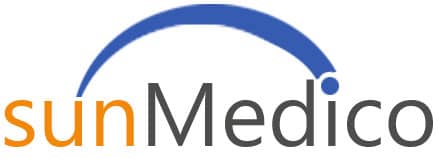Chin augmentation, also known as genioplasty, is a transformative procedure that enhances the size and shape of the chin, contributing significantly to the overall balance and proportion of the face. While the procedure itself is crucial, understanding the recovery process is equally important for achieving the best results and ensuring a smooth and comfortable healing journey. This article aims to provide a comprehensive guide on the recovery process of chin augmentation.
The Immediate Aftermath: What to Expect Right After Surgery
Immediately following chin augmentation surgery, it’s normal to experience some swelling, bruising, and discomfort in the treated area. Your surgeon will provide specific post-operative instructions, which may include care of the surgical site, medications to apply or take orally to aid healing and reduce the potential for infection, and when to follow up with your surgeon.
The Healing Process: Week by Week Breakdown
Week 1: During the first week after chin augmentation surgery, it is crucial to prioritize rest and avoid engaging in any strenuous activities. Swelling and bruising may be present during this time, but they should gradually subside.
Week 2: By the end of the second week, most of the noticeable swelling should diminish, allowing you to observe the emerging shape of your new chin. It is important to continue following post-operative care instructions provided by your surgeon.
Weeks 3-8: Over the next few weeks to months, your chin will continue to heal and undergo further transformation. As the healing process progresses, the final result of the chin augmentation will gradually become more apparent. It is essential to be patient and allow your body the necessary time to heal fully.
Remember to consult with your surgeon regarding any specific instructions or concerns you may have during each stage of the recovery process.
Recovery Post-Op Tips: Optimizing Chin Augmentation Healing
- Follow your surgeon’s instructions: It is crucial to strictly adhere to the post-operative care instructions provided by your surgeon. This includes taking medications as prescribed, caring for the surgical site, and attending follow-up appointments.
- Manage swelling and bruising: Applying cold compresses or ice packs to the treated area can help reduce swelling and bruising. Be sure to follow your surgeon’s recommendations on timing and frequency for using cold compresses.
- Take it easy: Resting and avoiding strenuous activities during the initial recovery period is vital for optimal healing. Listen to your body and give yourself the time you need to recover fully.
- Protect your incisions: If your incisions are inside the mouth, maintain good oral hygiene to prevent infection. If the incisions are under the chin, keep the area clean and dry as instructed by your surgeon.
- Eat a soft diet: To avoid unnecessary strain on the chin area, stick to a soft diet during the early stages of recovery. Opt for foods that are easy to chew and won’t put excess pressure on the surgical site.
- Practice good skincare: Follow your surgeon’s recommendations for skincare, including avoiding sun exposure, wearing sunscreen, and using gentle products on your face.
- Stay hydrated: Drinking an adequate amount of water helps promote healing and keeps your body in optimal condition during recovery.
- Seek support: Reach out to your surgeon or medical team if you have any concerns or questions during the recovery process. They are there to provide guidance and support to ensure your recovery goes smoothly.
Potential Complications and How to Handle Them
One potential complication is infection, which while rare, can occur. Signs of infection can include fever, increased pain, redness, and unusual swelling at the surgical site. If you notice any of these symptoms, it’s important to contact your surgeon immediately. Treatment for an infection typically involves antibiotics and in some cases, additional surgery may be required to remove the implant until the infection clears.
Bleeding is another potential complication. While some bleeding is expected during the procedure, excessive bleeding can lead to complications such as hematoma (a collection of blood outside of the blood vessels). If you notice excessive bruising, swelling, or a hard lump in the surgical area, contact your surgeon immediately. Treatment may involve draining the hematoma.
Numbness or changes in skin sensation can occur due to the manipulation of tissues and nerves during the procedure. This is usually temporary and resolves over time as the nerves recover. However, in some cases, these changes can be permanent. Regular follow-ups with your surgeon can help monitor this condition.
Poor scarring is another potential complication. While the incisions for chin augmentation are usually placed in discreet locations (inside the mouth or under the chin), in some cases, the scars may be more visible than expected or may not heal well. Your surgeon can provide guidance on scar care to minimize their appearance.
Lastly, there’s a risk of dissatisfaction with the aesthetic result. This could be due to unrealistic expectations, poor communication with the surgeon, or complications such as implant shifting. It’s crucial to have a thorough discussion with your surgeon before the procedure to understand what can realistically be achieved and to ensure your goals align with what is surgically possible.
While chin augmentation is generally a safe procedure when performed by a qualified and experienced plastic surgeon, it’s important to be aware that like any surgical procedure, it carries some risk of complications. Understanding these potential complications and how to handle them is a crucial part of the process.
At Sunmedico, our team of experienced professionals is dedicated to ensuring your safety and satisfaction. We provide comprehensive guidance and support throughout the entire process, from initial consultation to post-operative care. If you’re considering chin augmentation guidance and support throughout the entire process, from initial consultation to post-operative care. Dont hesitate to reach out to Sunmedico. We’re here to answer your questions, address your concerns, and help you navigate your journey towards enhanced facial aesthetics.


